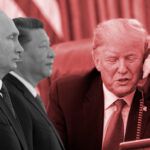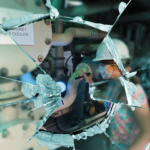The risks of North Korea’s nuclear restart
By Siegfried S. Hecker | May 12, 2009
On April 13, the U.N. Security Council condemned North Korea’s rocket launch earlier in the month. Within nine hours, North Korea denounced and rejected the Security Council statement; expelled international inspectors and the U.S. technical team from its Yongbyon nuclear facilities; walked away from the Six-Party Talks and all previous agreements; threatened to strengthen its “self-defensive nuclear deterrent”; and said that it would restore its nuclear plant to normal operation and reprocess spent fuel rods. Two weeks later, the North Korean Ministry of Foreign Affairs threatened to take measures that “will include nuclear tests and test-firings of intercontinental ballistic missiles” and “will make a decision to build a light water reactor power plant and start the technological development for ensuring self-production of nuclear fuel as its first process without delay” unless the Security Council promptly apologizes for its infringement on North Korea’s sovereignty.
To assess the threat posed by the North Korean pronouncements, we must better understand North Korean capabilities. During the past five years, North Korea has given my Stanford University colleague, John W. Lewis, and I remarkable access to its Yongbyon nuclear facilities and its technical specialists. Moreover, it allowed a U.S. team of nuclear specialists to live on site and monitor the disablement of its Yongbyon nuclear facilities for 18 months, as well as allowing the International Atomic Energy Agency (IAEA) to have three inspectors on site full time. These arrangements provide insight into the state of North Korea’s nuclear program and how quickly it would be able to reconstitute parts of its operations.
I previously estimated that North Korea had produced between 40 and 50 kilograms of separated plutonium by the time it began to disable its nuclear facilities as part of the Six-Party Talks. North Korea declared that it had separated and weaponized only 26 kilograms.1 Assuming that 6 kilograms of plutonium would be needed for each nuclear weapon, North Korea has sufficient material for at most eight nuclear weapons and perhaps as few as four.
As part of the phased approach to denuclearization detailed in Six-Party agreements, North Korea had been disabling three core facilities at the Yongbyon nuclear complex–the fuel fabrication facility, the 5-megawatt-electric reactor, and the reprocessing facility. As I reported after a 2008 visit to the facilities, North Korea had completed 10 of 12 disablement actions. Yet I believe that North Korea can restore operations at all three of these facilities if it so chooses. Pyongyang had always interpreted the disablement process as making it more difficult, but not impossible, to return to plutonium production.
Prior to its April rocket launch, North Korea had discharged approximately 6,100 of the 8,000 fuel rods from its 5-megawatt reactor to the cooling pool, but disablement slowed to a crawl of 15 fuel rods/week, dragging out the projected completion of fuel unloading well into 2011. Progress also stalled on negotiating a protocol to verify past plutonium production, because Pyongyang refused to allow sampling of the reactor’s graphite core, the reprocessing facility, and waste sites. Verification is essential because of the discrepancies between Pyongyang’s plutonium declaration and U.S. estimates. No progress had been made on the declaration of weaponization facilities outside of Yongbyon, the existence of a uranium enrichment program, and the extent and nature of Pyongyang’s nuclear exports.
Pyongyang announced on April 24 that it had already restarted the reprocessing facility. This is not surprising because during a previous suspension of disablement actions in September 2008 (as part of a dispute with the Bush administration about not being removed from the list of states sponsoring terrorism), North Korean specialists were able to quickly re-install disabled reprocessing equipment within two to three weeks. After President Bush removed North Korea from the list on October 11, 2008, Pyongyang reciprocated by disabling the equipment once more. Although Yongbyon specialists did not introduce spent fuel into the reprocessing facility at that time, they performed maintenance while conducting flow tests and leak checks, which facilitated restarting the facility now.
The current load of spent fuel was in the reactor for two years before the reactor was shut down in July 2007. These 8,000 spent fuel rods could contain as much as 12 kilograms of plutonium. The North Korean declaration indicated that the total was less than 8 kilograms, which is reasonable because the reactor operated intermittently with significant power fluctuations. North Korea will be able to unload the approximately 1,900 fuel rods that remain in the reactor in less than one month. If it began its reprocessing campaign on April 24 as reported, Yongbyon scientists could reprocess the entire load of 8,000 fuel rods in less than six months. North Korean officials had previously told me that during their 2003 reprocessing campaign they reprocessed the entire load of spent fuel in less than four months.
Once these fuel rods were reprocessed, the facility would stand idle until the next load of spent reactor fuel is ready for reprocessing, at least three years from now. North Korea may choose to continue to run the reprocessing facility in the interim to process and dispose of the high-level radioactive waste generated by previous reprocessing campaigns. The reprocessing facility is in reasonable shape and likely can be kept operational for many years to come.
Once the remaining fuel rods are discharged from the reactor, several steps would need to be completed before the reactor could operate again. The secondary steam line that was severed as part of the disablement process can easily be repaired. However, since North Korea destroyed the reactor’s cooling tower last year, it would have to rebuild it unless it was prepared to construct an alternative cooling system or be willing to settle for very low reactor power levels (and low plutonium production rates). Although North Korean specialists told me in 2008 that rebuilding the tower may take one year, it could conceivably be accomplished in six months or so, as it requires only basic construction materials. More importantly, for the North Koreans to restart the reactor they would need fresh fuel. The reactor’s control-rod drive mechanisms were left in place during disablement because the reactor was not yet fully discharged, so restarting the reactor is primarily a matter of having a full reactor core of fresh fuel to load.
North Korea has approximately 2,000 clad fuel rods in storage and ready to load. (These fuel rods were fabricated prior to 1994 for the 5-megawatt-electric reactor.) It also has 12,000 bare fuel rods (without the magnesium alloy cladding), also fabricated prior to 1994, but for the 50-megawatt-electric reactor. These rods appeared to be in good shape when I saw them in storage at the fuel fabrication facility in 2008. This stockpile of fresh fuel was subject to disablement under the Six-Party agreement, with the possibility that they could be removed from North Korea, but Pyongyang never allowed that activity to begin.
The fuel rods prepared for the larger reactor appear to have the same diameter as the rods for the 5-megawatt-electric reactor rods but are 10 percent longer. They may require some machining to make the diameter and length fit, but it also may be possible to simply stack nine of these in the reactor core assembly instead of the customary ten. Regardless, the bare fuel rods must first be clad with a magnesium alloy. This will require restarting the magnesium metal production, fabrication, and machining lines. These activities and the assembly of the clad fuel rods could have started as early as this month, and they take about six months to complete, similar to the time required to rebuild the cooling tower.
To make completely new fuel rods for subsequent reactor loads will most likely require North Korea to bring the entire fuel fabrication facility back into operation. This will be difficult, because the facility was substantially disabled, and some of the facilities had decayed seriously during the 1994–2002 freeze. The front end of fuel fabrication (from uranium ore concentrate to uranium oxide) operated from early 2003 until it was shut down in July 2007. However, the building containing the hydrofluorination equipment, necessary to convert uranium oxide to uranium tetrafluoride (the step necessary before conversion to metal), was abandoned because of excessive corrosion and equipment collapse. Between 2003 and July 2007, Yongbyon specialists constructed a rather primitive hydrofluorination facility with limited capacity in an adjacent building based on a dry, instead of wet, process. This facility was tested, but it was not fully operational before the July 2007 agreement shut down the Yongbyon facilities once again. We cannot rule out that North Korea has operated undeclared uranium facilities, most likely outside of Yongbyon. The alleged export of nuclear technologies, possibly including uranium, to Libya and Syria point to the potential existence of such facilities.
Taking all of these factors into account, the best North Korea could do is to separate approximately 8 kilograms of bomb-grade plutonium by October 2009 and produce at most another 6 kilograms of plutonium per year for the next two to four years with its existing stocks of fresh fuel. This fuel would have to be reprocessed to be turned into bomb fuel. In the mean time, it could refurbish the fuel fabrication facility completely and continue this cycle for many years to come. North Korea has the material and manpower to do so. The only way North Korea could increase this rate of plutonium production is to build bigger gas-graphite reactors. In their April 14 statement announcing the resumption of nuclear operations, Pyongyang stated that it will consider building a light-water reactor on its own; it did not threaten to resume construction on its bigger gas-graphite plutonium production reactors, a process that would take 5 years or more because North Korea has limited industrial capacity.
North Korea is not limited by its facilities to weaponize separated plutonium. These are most likely outside of Yongbyon, but their precise location is unknown because they have not been declared, nor have they been part of the disablement process. To make better bombs, particularly to miniaturize them and have confidence to mount them on missiles, North Korea would have to conduct one or more nuclear tests. Although it must have been tempted to conduct a second test after the limited success in October 2006, North Korea has been constrained by its meager plutonium inventory and by the threat of international sanctions. If it had another 8 kilograms available, it could decide to conduct another test. The addition of one more bomb to Pyongyang’s small arsenal would not represent a greatly enhanced threat, yet a more sophisticated arsenal would.
Little is known about the North Korean uranium enrichment program. Suspicions about the program have intensified since U.S. analysts found traces of highly enriched uranium on two separate sets of items provided by the North Koreans in late 2007 and in 2008. My judgment remains that it is highly likely that North Korea has a uranium enrichment research effort but not at an industrial scale. The curious announcement that Pyongyang could pursue building a light water reactor on its own may allow it to reveal its uranium enrichment program now that it has the cover of doing so for civilian purposes. North Korea doesn’t likely have the materials or technology for such a program, however, making an alliance with Iran an ever-increasing possibility.
The potential for North Korea to export its nuclear technologies and/or materials remains the most troubling concern regarding its nuclear program. In April 2008, the CIA provided convincing evidence that North Korea was involved in building the Syrian reactor destroyed in a September 6, 2007 Israeli air raid. The reactor was of the same design as the 5-megawatt-electric reactor at Yongbyon and appeared to have no other purpose than to produce plutonium. However, no reprocessing facility has been found in Syria, raising the question of who the intended customer was for the reactor’s plutonium. Recent reports alleging that Iran bankrolled the reactor construction raise the greatest concern–namely, a possible cooperative nuclear venture between North Korea and Iran.
In summary, North Korea is capable of carrying out its threat to restart the Yongbyon plutonium production facilities; however, it is limited to adding roughly one bomb per year to its small arsenal of nuclear weapons. The greatest threat of a restart is that it may embolden Pyongyang to test another weapon in order to improve its arsenal’s sophistication or that it would give it an additional incentive to link up with Iran in a troublesome alliance of nuclear and missile technology cooperation–an action that could further endanger Northeast Asia and the Middle East.
1There is significant confusion over the North Korean plutonium declaration. North Korean officials told me in February 2008 that they declared 30 kilograms of plutonium to American officials in November 2007. It was subsequently reported that 26 kilograms had been “weaponized.” Pyongyang apparently claimed that only 2 kilograms were used for its 2006 nuclear test and 2 kilograms were held up in the reprocessing plant. The roughly 38 kilograms subsequently reported is believed to include the 8 kilograms in the current batch of 8,000 spent fuel rods.
Together, we make the world safer.
The Bulletin elevates expert voices above the noise. But as an independent nonprofit organization, our operations depend on the support of readers like you. Help us continue to deliver quality journalism that holds leaders accountable. Your support of our work at any level is important. In return, we promise our coverage will be understandable, influential, vigilant, solution-oriented, and fair-minded. Together we can make a difference.
Topics: Opinion















